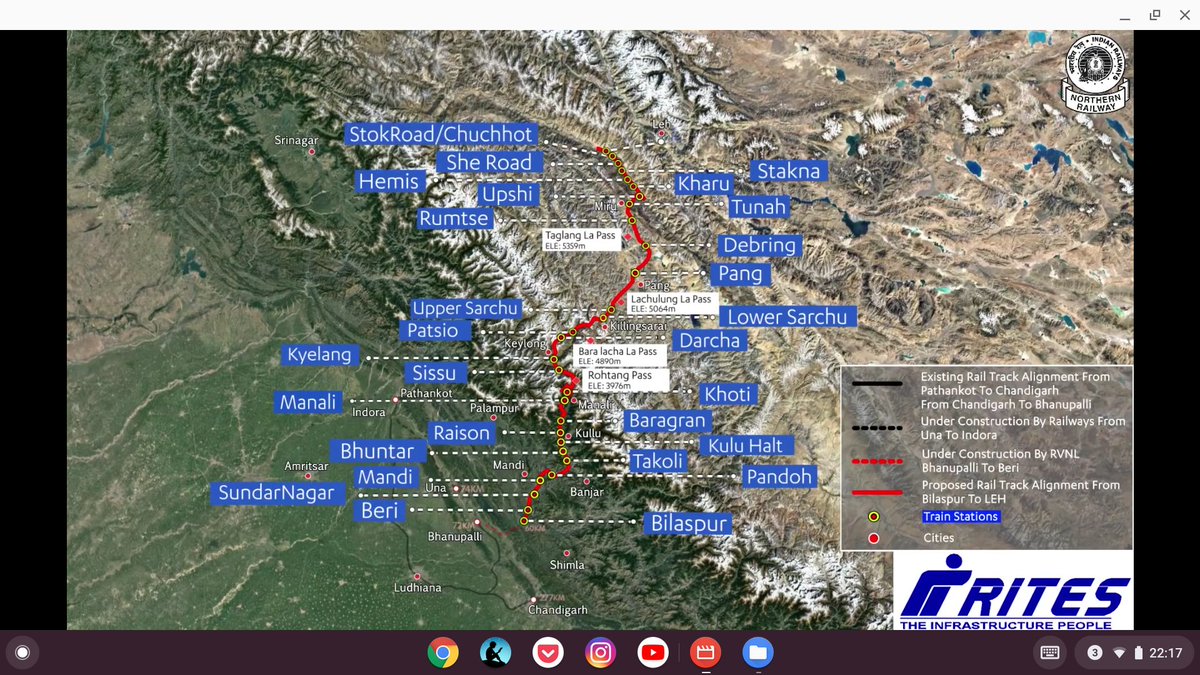
Railways & Mobility Alok Kumar Verma, IRSE (Retd)
25 Nov,
7 tweets, 9 min read
K-RAIL: WHY HAS RAILWAY BOARD NOT TAKEN ANY ACTION AGAINST MD/KRDCL FOR SUBMITTING FEASIBILITY REPORT BASED ON GOOGLE EARTH AND NO SURVEYS OF GROUND CONDITIONS & RIDERDHIP & DECIDING TO ADOPT STANDARD GAUGE?
Will Rly Board go on giving in-principle..1/3
english.mathrubhumi.com/news/kerala/e-…
Will Rly Board go on giving in-principle..1/3
english.mathrubhumi.com/news/kerala/e-…
..approvals in future also to projects involving this magnitude of public expenditure based on such fraudulent, concocted & cooked up feasibility reports?
.. 2/3
#Kerala_Silverline_Project
#KeralaSemiHighspeedProject
#AlignmentSurveys #IR_EngineeringCode
.. 2/3
#Kerala_Silverline_Project
#KeralaSemiHighspeedProject
#AlignmentSurveys #IR_EngineeringCode
https://twitter.com/trains_are_best/status/1424638651657424901?s=19
.. 3/3
#Kerala_Silverline_Project #railwayboard #IndianRailways #AlignmentSurveys #GeologicalSurvey #GeotechnicalSurvey #HydrologicalSurvey #KeralaFloods
#Kerala_Silverline_Project #railwayboard #IndianRailways #AlignmentSurveys #GeologicalSurvey #GeotechnicalSurvey #HydrologicalSurvey #KeralaFloods
https://twitter.com/trains_are_best/status/1462595253081284608?t=6F4EzY-AXNloS9w8F73J-A&s=19
... #KeralaSemiHighspeedProject #Kerala_Silverline_Project #K_Rail #AlignmentSurveys #AlignmentMethodology #GeologicalSurvey #GeotechnicalSurvey #HydrologicalSurvey #KeralaFloods
https://twitter.com/trains_are_best/status/1425806164172840962?t=54injn_1A30T3wNntFb02A&s=19
...#KeralaSemiHighspeedProject #Kerala_Silverline_Project
#railwayboard #IndianRailways #KeralaFloods #FlashFloodsinKerala #ClimateChange #AlignmentSurveys #GeologicalSurvey #GeotechnicalSurvey #HydrologicalSurvey
#railwayboard #IndianRailways #KeralaFloods #FlashFloodsinKerala #ClimateChange #AlignmentSurveys #GeologicalSurvey #GeotechnicalSurvey #HydrologicalSurvey
https://twitter.com/trains_are_best/status/1464047837457444866?t=YBOS7g7aOaeeUT_JHIlBxA&s=19
...
This an excerpt from the discussion in the webinar which was organised by KSSP in July'21.
MD/KRDCL, who was also present, could only give the silly excuse that they did ground surveys after receiving in-principle approval from Board.
This an excerpt from the discussion in the webinar which was organised by KSSP in July'21.
MD/KRDCL, who was also present, could only give the silly excuse that they did ground surveys after receiving in-principle approval from Board.
https://twitter.com/trains_are_best/status/1449542956822585344?t=QQmOjWFUih4ZbxCeFEnO4A&s=19
@threadreaderapp unroll
• • •
Missing some Tweet in this thread? You can try to
force a refresh













